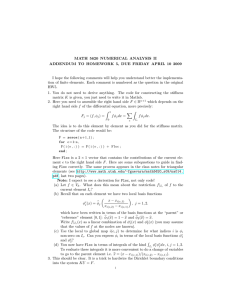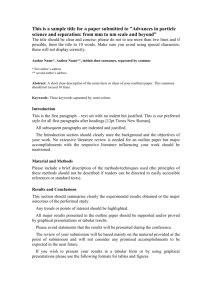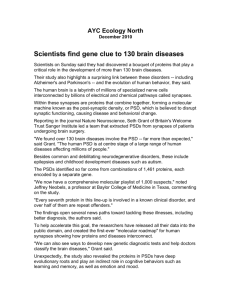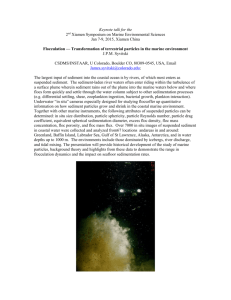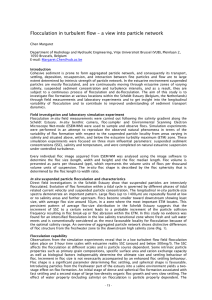MULTIMODALITY OF A PARTICLE SIZE DISTRIBUTION OF MARINE
advertisement
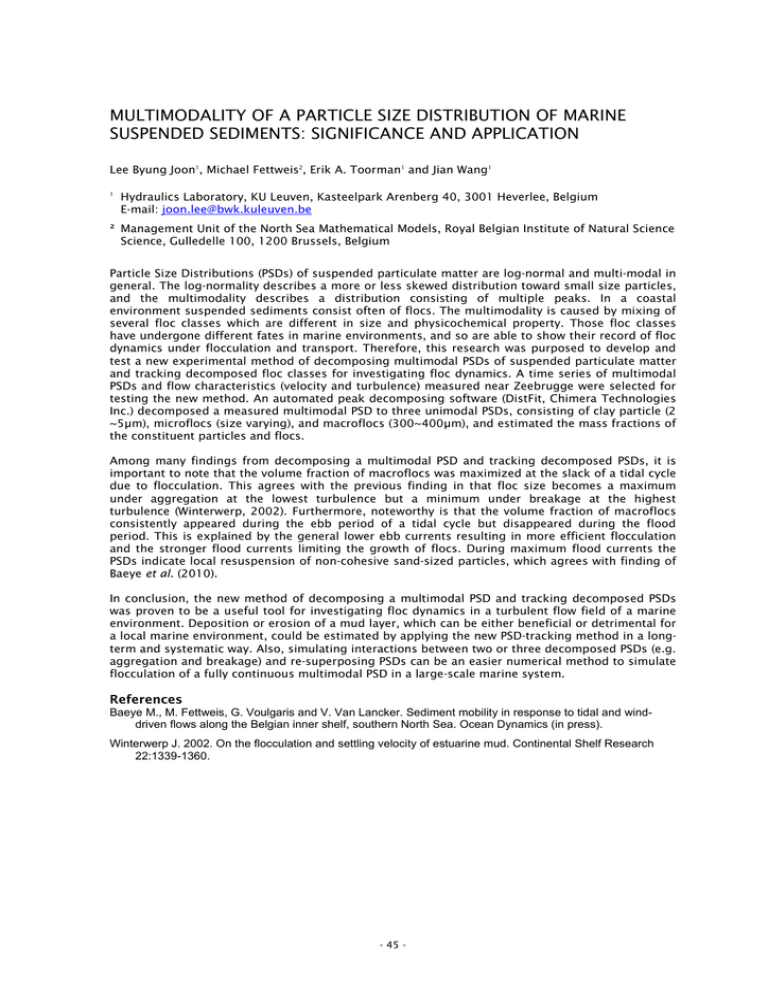
MULTIMODALITY OF A PARTICLE SIZE DISTRIBUTION OF MARINE SUSPENDED SEDIMENTS: SIGNIFICANCE AND APPLICATION Lee Byung Joon1, Michael Fettweis2, Erik A. Toorman1 and Jian Wang1 1 Hydraulics Laboratory, KU Leuven, Kasteelpark Arenberg 40, 3001 Heverlee, Belgium E-mail: joon.lee@bwk.kuleuven.be ² Management Unit of the North Sea Mathematical Models, Royal Belgian Institute of Natural Science Science, Gulledelle 100, 1200 Brussels, Belgium Particle Size Distributions (PSDs) of suspended particulate matter are log-normal and multi-modal in general. The log-normality describes a more or less skewed distribution toward small size particles, and the multimodality describes a distribution consisting of multiple peaks. In a coastal environment suspended sediments consist often of flocs. The multimodality is caused by mixing of several floc classes which are different in size and physicochemical property. Those floc classes have undergone different fates in marine environments, and so are able to show their record of floc dynamics under flocculation and transport. Therefore, this research was purposed to develop and test a new experimental method of decomposing multimodal PSDs of suspended particulate matter and tracking decomposed floc classes for investigating floc dynamics. A time series of multimodal PSDs and flow characteristics (velocity and turbulence) measured near Zeebrugge were selected for testing the new method. An automated peak decomposing software (DistFit, Chimera Technologies Inc.) decomposed a measured multimodal PSD to three unimodal PSDs, consisting of clay particle (2 ~5μm), microflocs (size varying), and macroflocs (300~400μm), and estimated the mass fractions of the constituent particles and flocs. Among many findings from decomposing a multimodal PSD and tracking decomposed PSDs, it is important to note that the volume fraction of macroflocs was maximized at the slack of a tidal cycle due to flocculation. This agrees with the previous finding in that floc size becomes a maximum under aggregation at the lowest turbulence but a minimum under breakage at the highest turbulence (Winterwerp, 2002). Furthermore, noteworthy is that the volume fraction of macroflocs consistently appeared during the ebb period of a tidal cycle but disappeared during the flood period. This is explained by the general lower ebb currents resulting in more efficient flocculation and the stronger flood currents limiting the growth of flocs. During maximum flood currents the PSDs indicate local resuspension of non-cohesive sand-sized particles, which agrees with finding of Baeye et al. (2010). In conclusion, the new method of decomposing a multimodal PSD and tracking decomposed PSDs was proven to be a useful tool for investigating floc dynamics in a turbulent flow field of a marine environment. Deposition or erosion of a mud layer, which can be either beneficial or detrimental for a local marine environment, could be estimated by applying the new PSD-tracking method in a longterm and systematic way. Also, simulating interactions between two or three decomposed PSDs (e.g. aggregation and breakage) and re-superposing PSDs can be an easier numerical method to simulate flocculation of a fully continuous multimodal PSD in a large-scale marine system. References Baeye M., M. Fettweis, G. Voulgaris and V. Van Lancker. Sediment mobility in response to tidal and winddriven flows along the Belgian inner shelf, southern North Sea. Ocean Dynamics (in press). Winterwerp J. 2002. On the flocculation and settling velocity of estuarine mud. Continental Shelf Research 22:1339-1360. - 45 -

